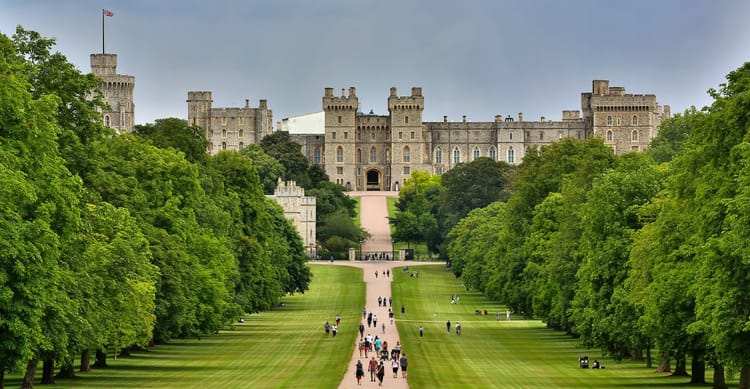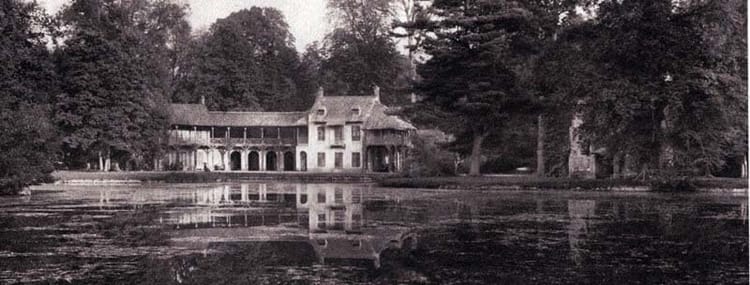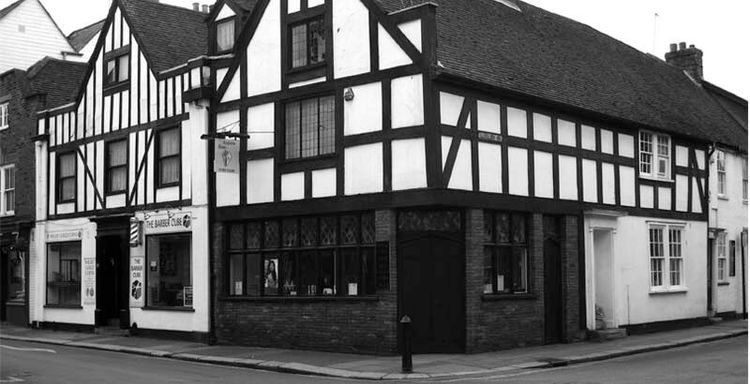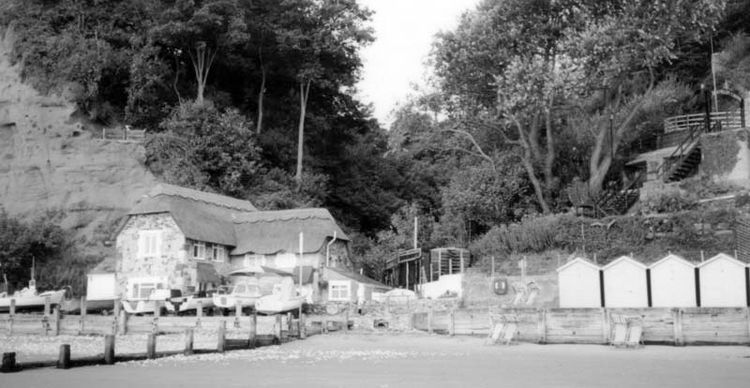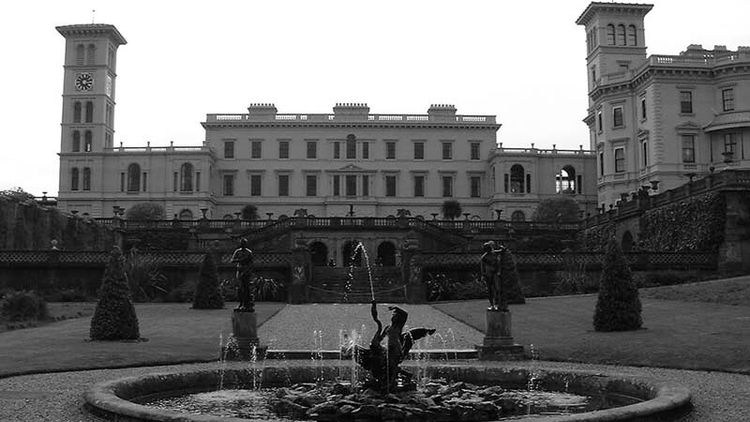Royal Yacht Squadron. Ghosts of the Isle of Wight, with Margo Williams.
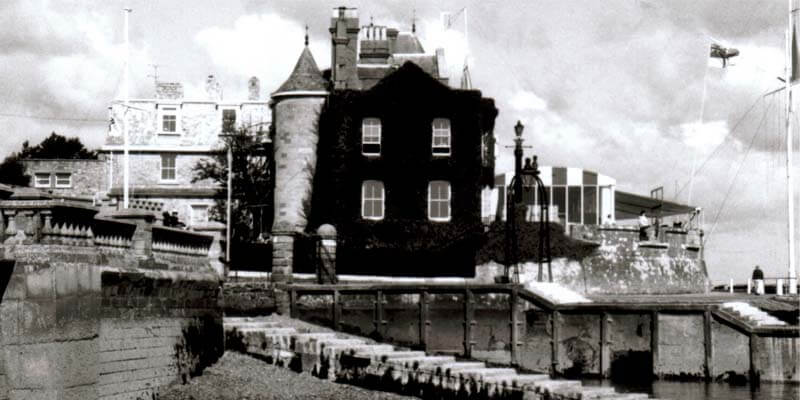
Cowes M.rder Mysteries
THE WORLD-FAMOUS Royal Yacht Squadron, focus of Cowes Week sailing regattas, stands on the foundations of a Tudor gun fort - Cowes Castle - built to defend against marauding French raiding missions.
Now each Cowes Week welcomes French and Spanish sailors as the world’s finest yachts-people come here to mingle with incoming tides of VIP merry-makers; though some of these have not impressed the class-conscious ghost haunting the building’s upstairs rooms.
Downstairs in the kitchen, staff feared a knife-drawer rattling poltergeist in their basement realm. The Royal Yacht Squadron was haunted by two ghosts, each with murder in mind.
For centuries Cowes played a vital part in the defence of this nation and Britain’s seafaring fortunes. Ship-building and sail-making brought great fame and prosperity to the island and even long after a vessel was launched, popping corks and good cheer continued.

Indeed, the Isle of Wight has a rich history of merriment, though excess was curbed for a time during the mid 1600s following defeat of King Charles in the civil war; but nothing can remove from memory the merry times of mad Lord Portland, governor of the isle. His blast-and-get-plastered parties were legendary.
During late summer of 1639, diarist knight Sir John Oglander noted the governor’s party capers, of how he and all his lordship’s friends: ‘…drank and shot, shot and drank till they were scarce compos mentis,’ said Sir John.
‘I may truly say that in the space of six days there was never so much powder fired except against an enemy. Friday the 2nd September they all drank, they were all madd, at every health tearinge of one another’s Bandes and shirtes insomuch as linnen was very hard to be found amongst them.’
Unfortunately, Lord Portland was imprisoned for such ‘acts of jollity’ and following his arrest in August 1642 the people of Cowes watched the menacing maneuvering out on the Solent.
As Paul Hooper describes in the excellent “Our Island” In War and Commonwealth, Parliament ordered a blockade of loyalist Portsmouth dockyard; one of the blockading ships - the Lion - standing off Cowes fired on two boats from the island bound for Portsmouth.
Humphrey Turney, who commanded Cowes Castle, fired upon the Lion. It was among the first shots fired in the civil war.
In response Captain Dick stormed ashore from the Lion, arrested brave Turney and seized the castle in the name of Parliament.
By the wet autumn of 1647 hapless King Charles I arrived at Cowes on his way to Carisbrooke, where he spent his last year before execution.
Some Cowes sailing-folk claim it is Turney’s ghost who roams the battlements to this day, haunting through weather fair and foul, ready with burning match and eyes on the Solent. Others insist they saw the ghost of a woman in the clubhouse rooms.
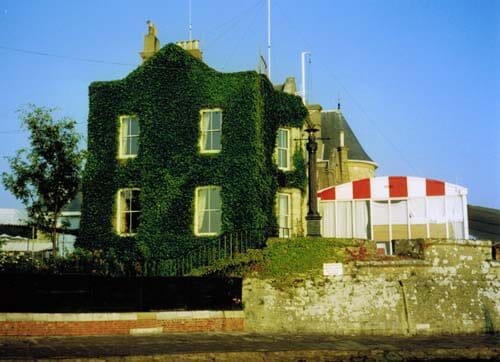
The Ghost in the Basement
During an afternoon visit, invited to the Royal Yacht Squadron, the Secretary sat at his desk in the cramped office and gaped at me through the eyes of a drowning man.
He explained how kitchen staff were scared by a ghost fooling around with the contents of the knife drawers. He did his best to take on board the possibility that ghosts do exist, smiled politely then led me downstairs to the below world of the castle.
The kitchen was quiet, no sailing events that day; but come Cowes Week, we can only wonder how Matthew the ghost contributed to those big occasions in his own unique way.
I am sure those troubled by his presence will be glad to know he now has left the building. Matthew confessed at long last to a secret murder; for there is quite literally a body in the basement, hidden in the foundations of the Royal Yacht Squadron.
“… In torment and in agony my spirit has tarried by the foundations I built,” he complained. “By the holy rood joyful tidings come to me. Knoweth I that thou canst send me thither to paradise."
The ghost paused thoughtful before confession.
"Into a dusky tomb mine enemy was placed," he continued. "A plague upon him, he required speedy payment or forfeit my life. A blow upon his head, stones put upon him, his flesh long gone, his bones now dust. Many crowns I owed this worthy soul, so took the path of violence. His absence was noted not. High seas could bear the guilt.
Thou cometh and dare Matthew hope for paradise after endless years? Fare thee well stranger, I go. His dusty bones remain in the foundation, his soul has long gone on.”
The ghost spoke no more.
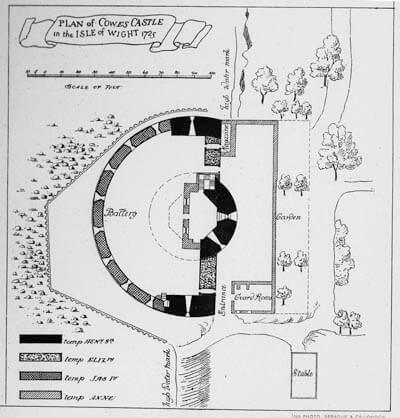
The Ghost Upstairs
Matthew from the lower levels left no trace of his life by which to confirm identity or crime. Surprisingly not the only Squadron ghost with m.rder in mind.
So too had a ghost from the club room ‘above’. She too told me her name, a noble no less.
I found her haunting the upstairs room. She offered me a coin for my trouble and confessed to a similar crime, albeit accidental.
It may perhaps be possible to check back through the records to confirm that someone at the Yacht Squadron met with a tragic end on dry land. It may be possible to confirm the murderess was there that very day.
But would it do either any good? Sometimes it is better not to know.
“… I thought you were leaving,” she chided. I grabbed my pencil and paper to record her words. “I came here many years ago when it was first opened as a yacht club. Oh, the grand times we had sitting watching the yachts.
My husband sailed, I feared the water, preferred to remain as spectator. The clothes were more acceptable to me than the yachts. Royalty often graced this building, and still does. Yet royalty is not like it was, far too free with the language. It shocks one such as myself, a born lady."
She paused on that fact of life.
"I fear I behaved in a manner not befitting my station in life," she continued. "Drank too much champagne, it always changed my nature. Going to the room set aside for lady guests I struck a servant girl such a blow she fell, striking her head on a heavy oak chair.
I saw she was dead. I withdrew. No one was around. Too busy with their champagne and talking about the last race. We did not hear about the accident, it was only a maidservant."
I heard a rueful sigh.
"But when I died, I found I was trapped by guilt, a m.rderess. You, a woman of no title and no reason to be here, can release me, sending me to meet whoever there is to greet me. My name is Lady F. Thank you. If I had a coin I would give it to you for your trouble. M.rderess I may be, but I was not mean.”
The ghostly Lady F. no longer haunts the Royal Yacht Squadron, and m.rderous Matthew too is gone, though his victim’s dust may still be found in the nooks and crannies.
But where now they have gone is anyone’s guess.
Thank you for your company on this short tour of Isle of Wight mysteries and haunting. If you would like to know more about Margo Williams' investigations in Cowes and other rogues and royals, read this book. Now available from Amazon.

